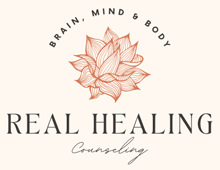PIA MELLODY DEFINES INTIMACY AS THE EXPERIENCE OF KNOWING —AND BEING KNOWN BY— ANOTHER PERSON.
Intimacy is a mutual and deep connection. It is a feeling (of being close), a practice, an experience, of being deeply and authentically known, seen, and heard.
BARRIERS TO INTIMACY
Many of us grew up not knowing what healthy intimacy looks like and feels like, because we never experienced it. Instead, we grew up in family system where there was enmeshment (1) or emotional neglect (2).
Humans seek out what is familiar. There is actually an old part of our brain that interprets familiarity as safety. We can mistake intensity or enmeshment for intimacy and chaos for passion. We can also experience an activated nervous system as having feelings for someone and find healthy, stable relationships boring and unattractive.
We can even be totally freaked out by healthy intimacy because it is something we have never experienced, something we don’t even know what to do with, something that can even feel threatening due to our earliest attachment experiences.
For instance, people who struggle with codependency, love addiction or an anxious attachment style can have a subconscious fear of intimacy. When they are presented with such closeness, they panic and create intensity or separation. Additionally, they often seek enmeshment, not intimacy. They may experience closeness as a threat (of being left), since being left is the conscious fear.
People who struggle with codependency or an avoidant attachment style have a conscious fear of intimacy. This is because in childhood, they were enmeshed or controlled in relationships, often by their primary caregivers. They can perceive closeness as a threat, associating intimacy and closeness with loss of self and with being controlled as they were in childhood.
Less than nurturing childhood experiences create self- esteem issues (3), reality issues (4), interdependence issues (5) boundary issues (6), and toxic shame (7) in children, often carrying into adulthood, all of which are foundational ingredients for healthy intimacy.
Getting triggered without self-awareness and tools impacts our ability to be relational in a healthy way. Romantic relationships trigger our childhood wounds, giving us an abundance of opportunities for healing. Vulnerable relationship can trigger emotional regressions (8), bringing up our “inner child’ and ‘inner teenager”, who like to run the show. It can also bring up old feelings, beliefs and stories that have a tendency to masquerade as if they are from the present.
“WE ARE ALL BORN WITH AN AMAZING CAPACITY TO SURVIVE, HEAL, AND THRIVE, WHICH IS PRECISELY WHY WE HAVE MADE IT THIS FAR, TO BEGIN WITH.” – DR.
DIANE POOLE HELLER
We do not have to be fully “healed” to be in a loving, healthy relationship. In fact, we can heal deeply in a (safe enough) relationship as long as we are willing to do the work.
1.Enmeshment- inappropriate or blurred boundaries in a relationship. There’s not a clear divide between individuals leading to over-control or loss of autonomy.
2.Childhood emotional neglect– lack of validation or parental emotional support. Being shamed for having or expressing your feelings.
3. Self-esteem issues– feeling better than or less than others, being unable to esteem yourself.
4. Reality issues- difficulties knowing and owning what you look like, your thoughts, feelings, and behaviors.
5. interdependence issues– being overly dependent or anti- dependent which manifest as either not asking for and accepting help or being too dependent upon help from others.
6. Boundary issues-being boundaryless or walled off or a combination of both.
7. Toxic shame– unlike healthy shame which shows us when we violate our own boundaries or social norms, toxic shame is the belief that you are inherently flawed and “wrong”.
8. Emotional regression- we emotionally feel and behave as if we were young or “small”. We may literally feel small, helpless or like a child. May go into the trauma response of fight, flight, freeze or fawn.

